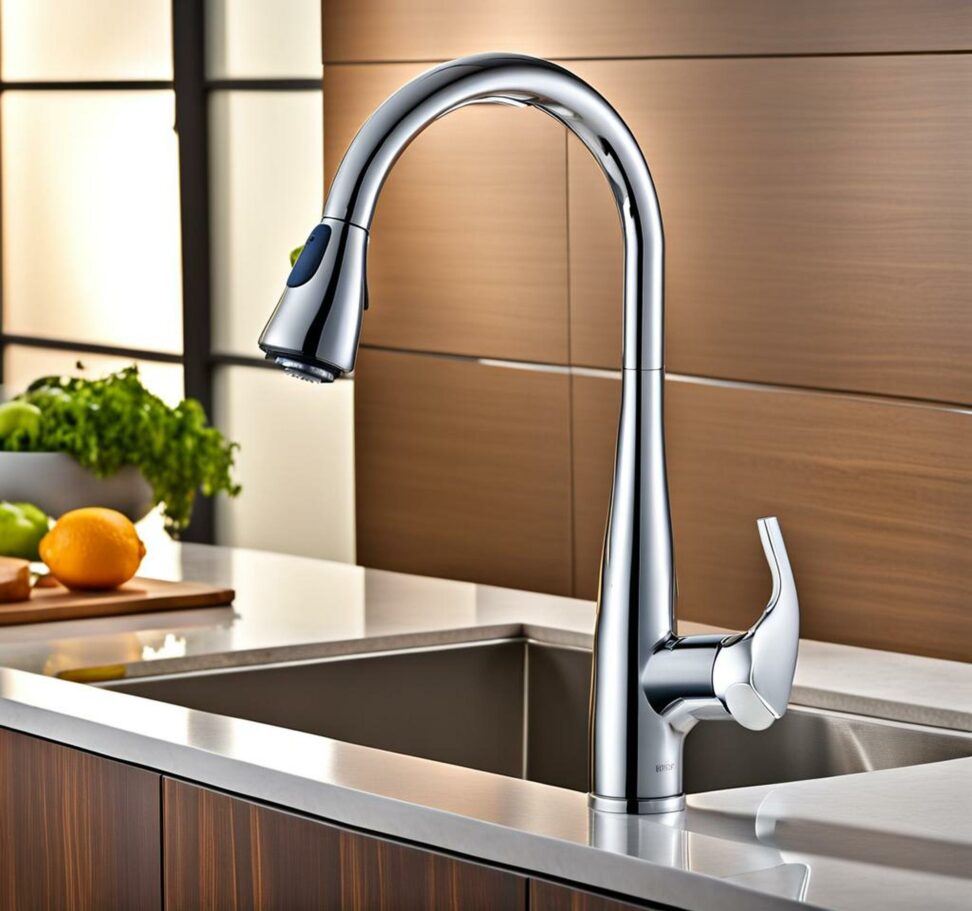Kitchen Faucet Not Swiveling? How To Easily Fix it Without a Plumber
It can be incredibly frustrating when you go to turn on or adjust your kitchen faucet and find that it's completely stuck and won't swivel. A seized up faucet prevents proper water flow and also just looks bad flopping around loosely. Fortunately, with a few basic tools and DIY troubleshooting techniques, you can often get your faucet moving freely once again without having to call a plumber.
Sticking and frozen faucets are generally caused by mineral deposits and corrosion that build up in the faucet's interior metal components over time. Hard water is a common culprit, leaving behind calcium and limescale that jam up the small moving parts. Sediment and grit can also work their way into the faucet body and seize things up.

Getting Stuck Handles Moving Again
If you have a standard dual-handle faucet, the sticking is likely isolated to just one of the handles. The first step is trying to break it free by rocking the handle vigorously back and forth while pulling up. Sometimes this shear force is enough to pop loose a seized handle.
You can also try spraying penetrating oil like WD-40 into the base of the stuck handle. Give it time to work before trying to operate the handle. The oil can help dissolve built-up gunk and lubricate the valve cartridge.
Removing the Faucet Handle
If the handle absolutely won't budge, the next step is taking it apart to inspect and clean the interior valve. Start by unscrewing the small set screw securing the handle. This will allow you to lift off the handle and expose the valve.
Examine the valve closely and clean out any debris, corrosion, or mineral deposits with a small brush. You may need to use pliers or a wrench to remove the entire valve cartridge so you can really clear it out.
Replace any worn out rubber washers or O-rings in the valve assembly. Reinstall the cleaned or new valve cartridge, put the handle back on, and secure it with the set screw.
Fixing a Seized Faucet Spout
If it's the actual faucet spout that's stuck and won't swivel, the problem is likely with the connector mechanism underneath the counter. Start by spraying penetrating lubricant around the spout base where it meets the faucet body.
Let it soak in before trying to rock and rotate the spout by hand. The key is applying continuous force on the spout in all directions to break it free. Gripping it tightly with a towel allows you to use some extra force without damaging the finish.
If the spout starts moving a bit but is still sticky, keep working the lubricant around the joints. You may need to pry it upwards to pop loose any corrosion before it will start swiveling smoothly again.
Replacing Internal Valve Cartridges
If lubricating and cleaning a stuck faucet handle hasn't worked, the issue may be the actual valve cartridge itself. Shut off the hot and cold water supply lines under the sink using the shut off valves. Then go through the steps above to remove the stubborn handle.
You should be able to extract the faulty cartridge with pliers or a basin wrench. Take the cartridge to your local hardware store to find a perfect replacement. Watch a YouTube tutorial if you need help with the specific disassembly steps for your faucet brand.
Once you have the replacement cartridge, it's just a matter of swapping in the new one, reattaching all the hardware, and turning your water supply back on. Be prepared to do some tweaking to get the new cartridge seated and sealed properly.
Preventing Future Faucet Seizing Issues
To help keep your faucet operating smoothly for years to come, get in the habit of regular maintenance. Every few months, unscrew the aerator at the end of the spout and rinse out any trapped sediment. Flushing your supply lines occasionally also helps clear out grit.
If you live in an area with hard water, using a water softener can help reduce mineral scale buildup inside your faucets. You should also make sure faucet valves are fully open and closed with each use to prevent sticking.
Lubricating washers and O-rings during routine cleanings keeps everything slipping smoothly. And simply running your faucet on a regular basis promotes healthy water flow.
If your faucet is so tightly stuck that you can't get handles or the spout to budge at all, it likely requires professional help. Same goes for visible cracks or leaks around the faucet base - that indicates something is broken internally.
A plumber has specialized tools and knowledge to dismantle very stuck faucets and properly replace damaged parts. They can also determine if the problem is stemming from issues with your hot water heater or supply lines.
Though frustrating, a stuck faucet is one of the more manageable DIY home repairs. Armed with some basic tools and the techniques above, you can often get your faucet moving freely again without waiting and paying for a plumber.